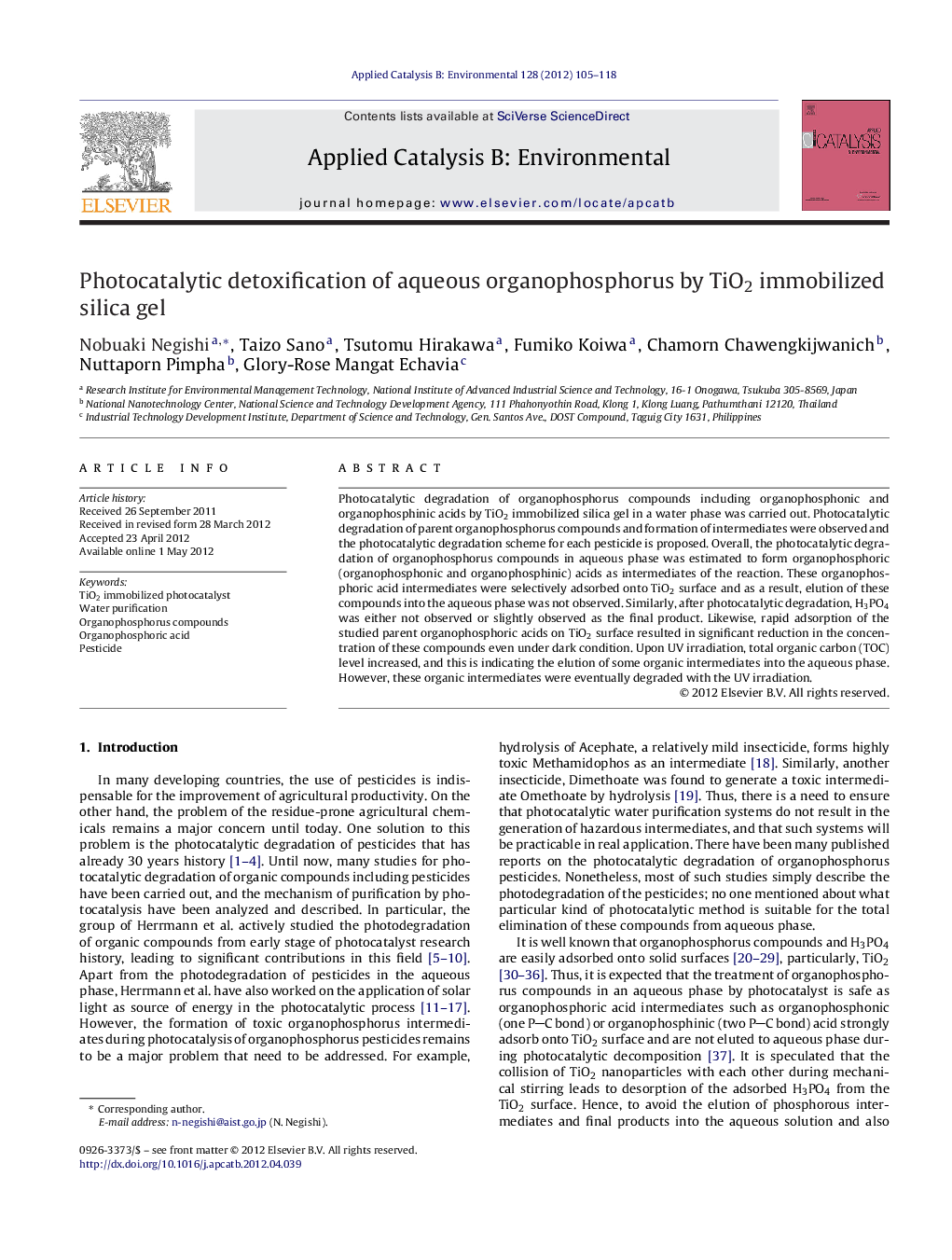| Article ID | Journal | Published Year | Pages | File Type |
|---|---|---|---|---|
| 46618 | Applied Catalysis B: Environmental | 2012 | 14 Pages |
Photocatalytic degradation of organophosphorus compounds including organophosphonic and organophosphinic acids by TiO2 immobilized silica gel in a water phase was carried out. Photocatalytic degradation of parent organophosphorus compounds and formation of intermediates were observed and the photocatalytic degradation scheme for each pesticide is proposed. Overall, the photocatalytic degradation of organophosphorus compounds in aqueous phase was estimated to form organophosphoric (organophosphonic and organophosphinic) acids as intermediates of the reaction. These organophosphoric acid intermediates were selectively adsorbed onto TiO2 surface and as a result, elution of these compounds into the aqueous phase was not observed. Similarly, after photocatalytic degradation, H3PO4 was either not observed or slightly observed as the final product. Likewise, rapid adsorption of the studied parent organophosphoric acids on TiO2 surface resulted in significant reduction in the concentration of these compounds even under dark condition. Upon UV irradiation, total organic carbon (TOC) level increased, and this is indicating the elution of some organic intermediates into the aqueous phase. However, these organic intermediates were eventually degraded with the UV irradiation.
Graphical abstractFigure optionsDownload full-size imageDownload as PowerPoint slideHighlights► Safe elimination of organophosphorus pesticides in an aqueous phase by TiO2 immobilized photocatalyst. ► Water-soluble organophosphoric compounds were effectively degraded. ► Phosphoric intermediates and H3PO4 with photocatalysis of organophosphorus compounds were adsorbed onto TiO2. ► TOC level with photocatalysis was increased than in the dark condition.
